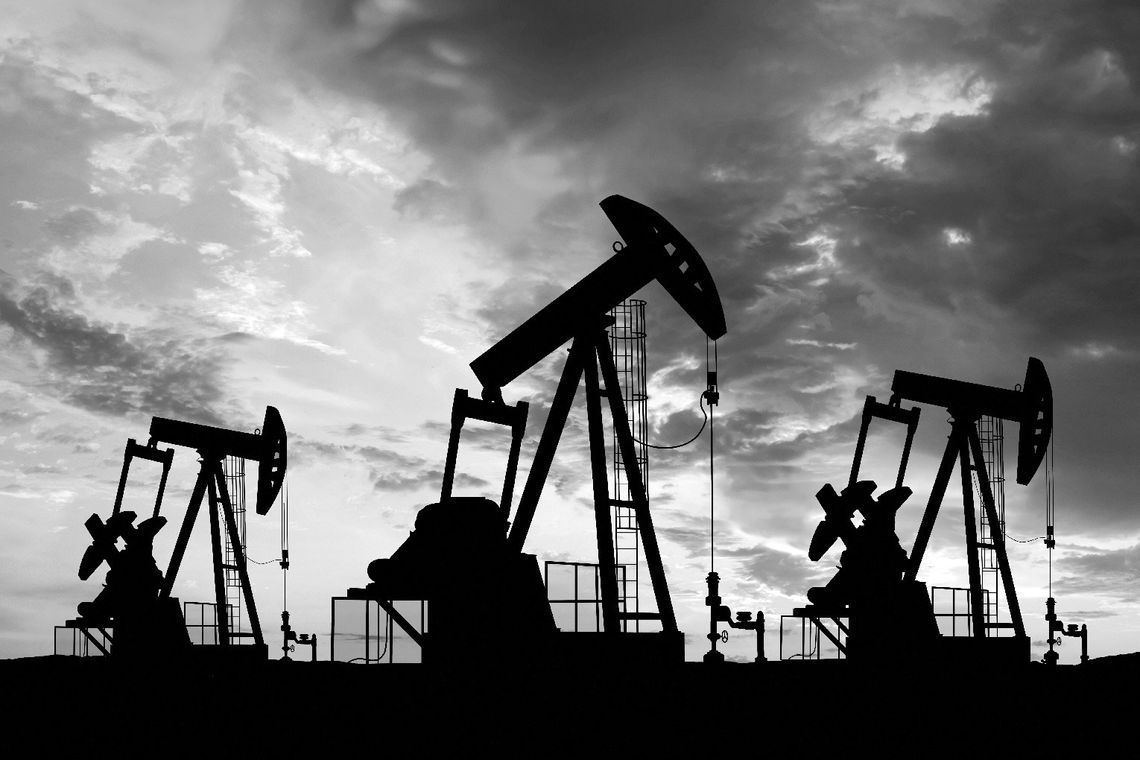Greenwood County History -
Old Field Terminology,
The Greenwood County oil boom started in the 1920s and lasted until the 1950s. Even though there is still oil production in Greenwood County, the barrels produced and the people employed in oil production have dropped significantly. In the boom years of oil, the people employed in the oil production, their family members and many ordinary citizens were familiar with oil field terminology. Today, few people are as knowledgeable with the oil field terminology. Listed below are some of the terms used in the oil field terminology and their definition. These terms came from a book Perry Rubart wrote on his memories of working in the oil fields. Cable-tool rigs were replaced almost completely in the 1930s by rotary rigs.
Power house: a stationary engine that pumps several oil wells and buildings.
2. Pump jack: the frame over the well that goes up and down as the rod line goes back and forth.
3. Gun barrel: a tank that separated oil and water before it went into storage tanks.
4. Sucker rods: 25foot lengths of solid rods screwed together with a coupler.
5. Crow’s nest: a platform on a portable derrick for the derrick man to work from.
6. Mud hog: the pump that pumps mud through the drill pipe on a rotary rig.
7. Dead man: a pipe or other device buried in the ground as a means of anchoring a line or guy wire.
8. Blowout preventer: a large valve screwed on a surface pipe as a safety valve in case of drilling in a gas pocket.
9. Slush pit: a deep pond where drilling cuttings and mud flow are stored during the drilling operation.
10. Dog house: a steel building that protects tools, men and equipment from the weather.
11. Lease hound: a person who travels around the country obtaining leases from property owners.
12. Christmas tree: the high-pressure valves installed on a well head to control the flow of oil and gas.
13. Jar head: slang for people working on a cable tool drilling rig.
14. Roughneck: a helper on a rotary drilling crew.
15. Tool dresser: a helper on a cable tool rig who heats the bit to red hot then uses a sledge hammer to shape the end of the bit.
16. Hit the ocean: drilling into a large saltwater formation.
17. Roustabout: a general term for an oil field worker who performs many different tasks.
18. Pumper: the person who checks oil wells and tank storage, looking for problems.
19. Water flood: the process of injecting salt or fresh water into oil formations to force oil into pumping wells.
20. Shoot the well: an old expression, when the new well was shot with nitro- glycerin.
21. Gin poles: the strong pipe on the back of oil field truck beds and they leaned back to run a winch line through to pick up a load.
22. Farm boss: the boss of the oil lease that oversaw the day-to-day operations, usually over several leases.
23. Gauger: one who measured and tested the crude oil in the storage tanks and pumped it into a pipeline.
24. Pig: a device in pipelines to clean the inside of the pipeline; was forced down the line with fluid or gas.
25. Trip: the term used to imply that all the drill pipe has been pulled out and the bit had been changed and returned to the drilling hole on a rotary rig. 26. Acidize: the pumping of acid down the tubing to treat an oil or gas formation. 27. D&A: means that the well was dry and abandoned; a failure to find what they were drilling for. 28. Tight hole: a wildcat well where the company during the drilling wanted no information revealed about the depth of formation found.
29. Blown out: when drilling and the drill bit penetrates a gas pocket and the well goes out of control.
30. Override interest: some party that has interest in a well that is not required to share in drilling and production costs.
31. Royalty interest: the interest in the well that belongs to the party who owns the mineral rights under the ground.
32. Five spot: the practice of drilling an injection well in the center of four producing wells.
33. Production superintendent: the person in charge of several oil leases, usually in the office, sometimes miles away from the leases.
34. Wildcat location: a well away from proven production.
35. Booster station: a station on a pipeline that has big pumps in it to boost the pressure in the pipeline.
36. Velvet: When a pumper measures the tank to see how much oil is there, he is supposed to report that amount to the office. Production bosses like stable production so that equates to no problem, so the pumper may hold back reporting some of the oil and use it to make up shortages on low production days If a relief pumper turns in all that is there, it appears he is a better pumper. This is a “no no” for a relief pumper.
37. Pipeline walker: between 1910 and 1930, men walked the route of the buried pipeline in all kinds of weather to spot leaks; after 1930 one would fly low with a small plane to spot leaks.
38. Swamper: the helper on an oil field truck who gave hand signals to the driver and help bind the load.
39. Dry hole: a non-production hole.



